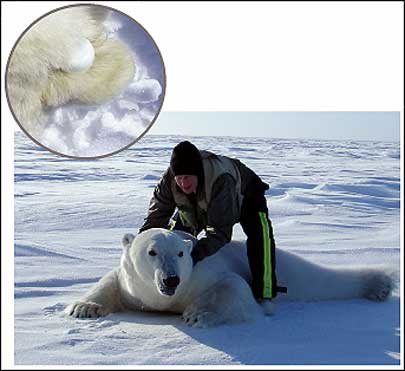For the past several years, researchers in Alaska’s northern reaches have been tracking polar bears with satellite radio collars to learn about changes in their health, population and environment—specifically, whether the sea ice’s recession, which has been attributed to global warming, impacts their movements and behaviors. But the research has been limited mostly to female bears, because the radio collars don’t fit properly on the male bears.
To collect more data for their studies, Geoffrey York, a biologist with the Marine and Freshwater Ecology Branch of the U.S Geological Survey, and his coresearchers wanted to outfit the male bears with RFID ear tags. But it took them the better part of five years to secure funding and find a vendor that could create a tag to their specifications. It had to be able to withstand the harsh Arctic climate and be readable from more than 100 feet. Also, the vendor had to be willing to manufacture the tags in relatively low quantities. “Even if the whole of the wildlife research community wanted them,” says York, “the demand would be much smaller than the kinds of demand the vendors have for industrial applications.”

Last winter, Integral RFID, an RFID solutions provider and integrator, teamed with tagmaker RF Code to develop an active 303 MHz tag encased in a ballistic white plastic casing. This spring, York and his team tagged 60 male polar bears in and near Barrow, Alaska. They are now identifying them from as far as 1,500 feet, flying above them in a helicopter with a yagi directional antenna lashed to a skid and linked to an interrogator inside the helicopter.
The researchers will continue to use some satellite radio collars, which let them monitor the bears’ movements remotely. But a radio collar costs $4,000 and its battery lasts two years, while the ear tag costs about $35 and its battery has a life expectancy of about five years. So female bears are likely to get some RFID bling, too.
“In the future, we’d like to add heart monitors to the tags so we could collect their heart rate,” says York. “That way, we could monitor how bears react when they become aware of the presence of humans, for instance. I definitely see us expanding into other opportunities with these tags.”

